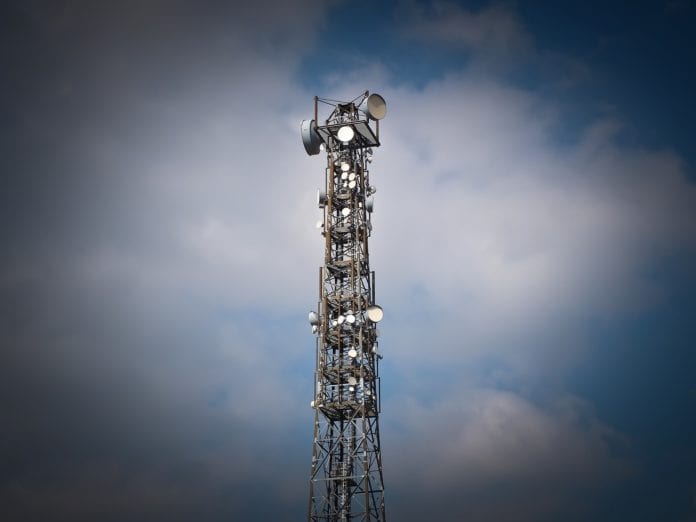Ericsson took to Mobile World Congress Los Angeles to demonstrate its dynamic spectrum sharing (DSS) solution for LTE and 5G NR networks, which supports the dynamic allocation of 4G and 5G traffic.
“Ericsson spectrum sharing,” Paul Challoner, Ericsson’s VP of Product Solutions, told RCR Wireless News, “allows, on the same radio carrier and the same radio, both 4G and 5G subscribers to be supported.” This means that the operator doesn’t have to add a new radio or new carrier to support the first 5G subscribers.
“So, 4G subscriber, 5G subscriber,” he continued, “totally dynamic.”
This is a game changer compared to previous generational upgrades. Challoner explained further that in the past, re-farming spectrum from one generation to the next, such as from 2G to 3G, caused major delays in the introduction of the latest generation.
But things are different for 5G. “For the first time, I can seamlessly go from 4G to 5G on the same radio infrastructure, meaning I can get to my customer base and provide coverage as quickly as possible.”
While DSS will certainly make the transition to 5G easier for operators, the demand for capacity in indoor spaces and large, public venues is challenging traditional deployment models, and forcing operators to rethink network deployment and management.
On the indoor front, Greg Rogers, VP and Head of Networks Business Development at Ericsson, discussed the trends impacting in-building deployments. Users are demanding the same high-quality experience indoors, even while new building practices and spectrum in use are making it harder for signals to reach from outside to inside. In-building use cases start with coverage, but new areas such as IoT and smart buildings are developed—for example, tracking assets in manufacturing and healthcare, or managing environment systems. Monetization will come from avoiding cost and creating new revenue streams.
According to Yunis Shahdad, Director of Business Development at Ericsson, the top five challenges facing operators in indoor spaces include: 1) the end user experience “to the tune of 100 megabits per second”; 2) the need to deploy solutions so that they can go years—10 years or greater—without being upgraded; 3) the CAPAX available for deployment; 4) the complexity of the deployment; and finally, 5) the space required to deploy and all of the equipment needed in these types of venue.
When it comes to challenge number two—making investments in equipment that will still be viable ten years down the road—Shahdad said Ericsson recommends that operators look at their existing active DAS deployments as a coverage layer and then add a capacity layer, like Ericsson’s Radio Dot System, “to compliment your previous investments.”
Ericsson’s VP & Head of Partnerships & Channels Eugene Banks also spoke with RCR Wireless, explaining that, from Ericsson’s perspective, a private network is anything that allows an enterprise application to run on top of a secure, on-premise site separated from public traffic.
“If […] a network is comprised of an enterprise core with its own radios, basebands, and IRUs that can be completely run within the enterprise, you’d classify that as a private network,” Banks further outlined.
He also stated that the demand for these private networks is being mostly created by the industrial manufacturing, utility and energy companies. According to Banks, the excitement around and acceleration of 5G and CBRS is inspiring a number of use cases in IoT and at the edge.
What this creates for Ericsson, Banks continued, is an opportunity to connect “simple and smart solutions at the edge” to help enterprise users achieve the outcomes that they are looking for.
Ericsson, as well as operators, are beginning to explore hybrid models for private networks, comprised of both CBRS and operator-lead spectrum. “Enterprises are going to have to take a good look at what they want to do with their data. CBRS allows lower costs for some aspects, but enterprises will still leverage operator-lead spectrum,” said Banks.
“I think there is room for both,” he added.
Lori Blair, Ericsson’s Channel Sales Director, said that because mobile network operators have budget limitations when it comes to building indoor cellular networks, and because most of their budgets go to large public venues and target enterprise, building owners and enterprise customers are increasingly taking it upon themselves to invest in their own in-building solutions to meet their needs.
“So, it is critical to have streamlined and efficient business models to enable the enterprise, along with the right technology solutions that can meet the needs of today and the future,” she added.
Mobile network operators, too, are realizing that they can leverage this additional capital coming into the market.
Blair explained that Ericsson provides solutions that are inclusive of the RF signal source, or the baseband. By utilizing the same technology used in the outdoor macro network, the Ericsson Radio Dot System provides a high performing and seamless experience for indoor and outdoor networks.
“Traditionally,” she continued, “when an enterprise purchased a DAS, it was a complex and lengthy process to get an RF source to feed the DAS. Now, having this ease of access to a system architecture that includes the RF source is a key differentiator.”

